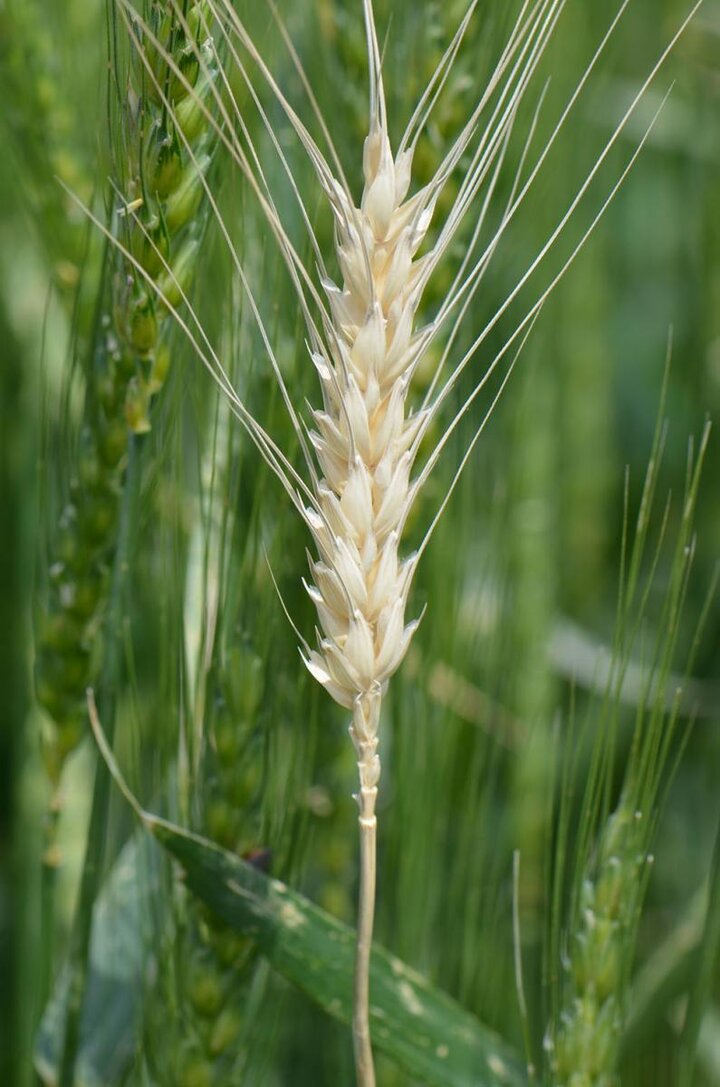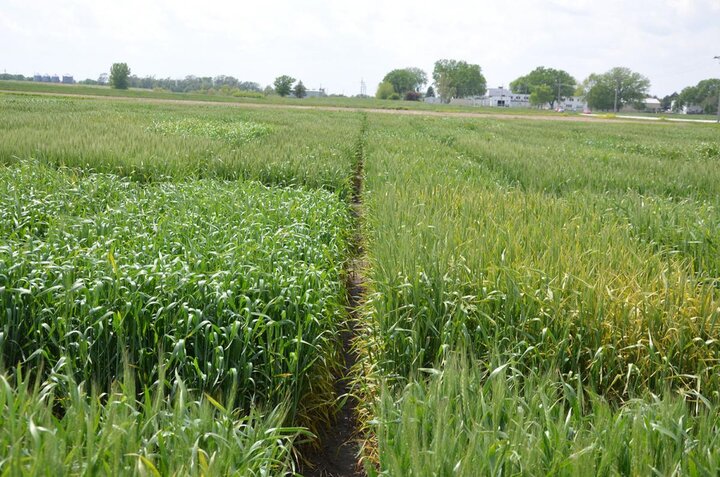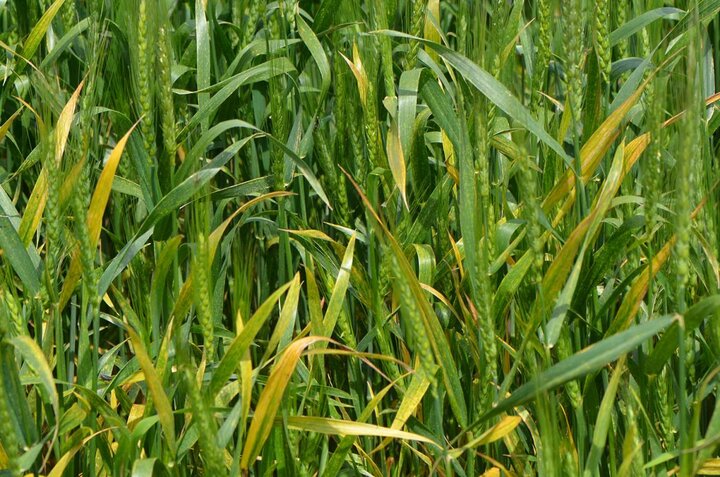



With wheat headed or flowering in southeast and south central Nebraska, head diseases are starting to appear. On May 17, Fusarium head blight (scab) was observed at Havelock Research Farm in Lincoln (Lancaster County) at moderate incidence (percentage of diseased heads) and low severity (percentage of diseased spikelets on a head) (Figure 1). Loose smut (Figure 2) was observed at trace levels of incidence at the Agricultural Research and Development Center (ARDC) near Mead.
There was a moderate incidence of heads whitened due to stem maggot damage at Havelock Farm (Figure 3). Stem maggot-damaged heads have a bright white color and are entirely whitened including the peduncle (stem below the head). They are easily detached when pulled, exposing the maggot damage and occasionally the maggot itself at the base of the peduncle (Figure 4). In contrast, heads with scab are initially partially bleached (Figure 1; bleaching can progress until the entire head is whitened) and do not detach easily when pulled.
Other diseases observed on May 17 at Havelock Farm and the ARDC were stripe rust which was severe in susceptible wheat lines (Figure 5) and low to moderate levels of barley yellow dwarf (Figure 6) caused by aphid-transmitted viruses.
Management
The severe symptoms of stripe rust in susceptible wheat lines in research plots (Figure 5) indicates that the potential for stripe rust to develop, spread, and cause significant yield loss still exists. Recent cool temperatures and continued cool nights coupled with dew formation at night and intermittent rains are conditions favorable for development and spread of stripe rust. If wheat is not headed, any fungicide labeled for use on wheat can be sprayed to protect the flag leaf from stripe rust and other foliar fungal diseases.
If wheat is headed, spray a triazole fungicide that can suppress scab and control rust and other foliar diseases. The two most effective fungicides on scab are Prosaro and Caramba. They are also excellent in controlling rusts and other foliar fungal diseases. Do not spray a strobilurin fungicide on wheat that is headed or flowering. Strobilurin fungicides have been shown to elevate vomitoxin when applied to wheat that is headed or flowering during scab-favorable growing seasons. Table 1, developed by the North Central Regional Committee on Management of Small Grain Diseases (NCERA-184), lists small grain fungicides and their efficacies. The name of the active ingredient in triazole fungicides ends in “…conazole” whereas that of strobilurin fungicides ends in “…strobin”.
Loose smut is seed-transmitted. It is managed by treating seed with a systemic fungicide before planting.
Barley yellow dwarf cannot be controlled once it occurs. Controlling aphids can reduce the disease; however, it is recommended that aphids be controlled based on the damage they cause to wheat rather than their potential to transmit barley yellow dwarf viruses. There are no pesticides that are effective on the wheat stem maggot and usually the damage it causes is not economically significant.


